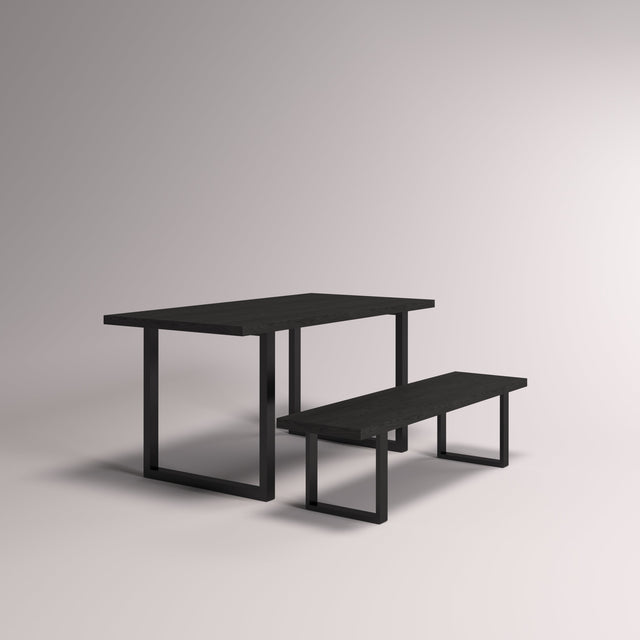Choosing the Right Wood Grain for Your Style and Investment
Why Grain Direction Deserves More Attention
Most people notice the shape of a table.
Some might notice the stain.
But very few ask about the grain and that’s where the story (and value) truly lives.
Wood grain isn’t just decoration.
It affects:
-
How the piece looks in natural light
-
How it wears over time
-
How it moves with seasons
-
And how long it’ll last
So let’s break it down.
1. Straight Grain: Clean, Minimal, Consistent
If your home style leans minimalist, Scandinavian, or contemporary, straight grain woods (like maple and ash) are your best friend.
-
✅ Clean lines
-
✅ Less “visual noise”
-
✅ Works well with light finishes
Best for:
Modern interiors, smaller spaces, or clients who want the shape of the table not the grain to take center stage.
Our pick: Canadian Maple.
→ Browse our Maple builds
2. Curly, Wavy, or Quilted Grain: Full of Character
Some hardwoods like walnut and certain oaks can have highly figured grain patterns with movement and depth.
-
🔁 Adds visual warmth and texture
-
🧬 Each piece looks different (in a good way)
-
🎨 Enhances mid-century or rustic styles
Best for:
Homeowners who love natural imperfection, warmth, and storytelling in their furniture.
Important note: This kind of grain usually cannot be faked with veneer or engineered boards.
3. Open Grain vs Tight Grain: Texture and Finish Impact
Woods like oak and ash have open grain, meaning they may absorb stain more deeply and show more surface texture.
Meanwhile, maple and cherry are tight-grained, with a smoother finish.
-
Open grain = rustic, raw, bold
-
Tight grain = soft, elegant, clean
Think about your lifestyle:
Do you want a table that hides wear over time? Open grain might be best.
Do you want a table that feels like silk when you run your hand across it? Go tight grain.
4. Grain Direction: More Than Just Looks
Grain direction impacts how wood moves, how strong it is, and how your table ages.
-
Edge grain = Durable and consistent
-
Face grain = Shows off the beauty of the wood
-
End grain = Extremely strong but rarely used for entire tabletops
At YEG Woodcraft, we build with grain movement in mind especially in Edmonton’s humidity swings.
→ Read: Wood Movement 101
5. What About Engineered Wood or Veneer?
Spoiler: The grain is printed or sliced, glued, and applied.
It’s thin. It’s decorative. It’s not structural.
And it won’t age with you.
If the grain doesn’t go through the wood it’s not built to last.
Your Grain Choice Is Your Furniture’s DNA
Whether you’re drawn to the quiet elegance of maple or the dramatic character of walnut, your wood grain sets the tone for the entire room.
At YEG Woodcraft, we walk you through:
-
Wood type
-
Grain pattern
-
Finish options
-
Seasonal movement
All to make sure your table isn’t just beautiful—but built for your life.

